On this page
Books about FlamingosThis page lists books that are totally or partially about Flamingos. The books are listed in order of publication date with the most recent at the top.
Flamingos
American Flamingo
Phoenicopterus ruber
Andean Flamingo
Phoenicoparrus andinus
Chilean Flamingo
Phoenicopterus chilensis
Greater Flamingo
Phoenicopterus roseus
James's Flamingo
Phoenicoparrus jamesi
Lesser Flamingo
Phoenicopterus minor
|
|
|
|
Flamingos: Behavior, Biology, and Relationship with HumansEditor: Matthew J Anderson
Nova Science Publishers
2016
"This edited volume is devoted to flamingo behaviour, biology and their relationships with humans. By thoroughly exploring and considering each of these topics together in one volume, Flamingos: Behaviour, Biology, & Relationship with Humans is designed to encourage in the reader a greater understanding of and appreciation for these fascinating and iconic birds." Chapters: 1. Flamingo Studies: A General Introduction; 2. The Evolution of Flamingos; 3. Diet and Foraging Behavior; 4. Flamingo Coloration and its Significance; 5. Flight, Navigation, Dispersal, and Migratory Behavior; 6. Flamingo Resting Behavior: A General Description and Sampling of Findings; 7. Flamingo Social Behavior and Flock Dynamics; 8. Reproductive Biology and Parenting Behavior; 9. Manís Impact on Flamingos; 10. Flamingos and Ecotourism; 11. Flamingos in Captivity: Pretty in Pink, Popular and Puzzling; 12. Flamingos and Gender Ideology in Advertising; 13. Flamingos and Other Tropical Themes in Clothing and Accessories; 14. Happy Captives and Monstrous Hybrids: The Flamingo in Childrenís Stories; 15. Flamingos in Folklore, Mythology, Religion and Art
|
 |
|
FlamingoCaitlin R Kight
Animal series
Reaktion Books
2015
176 pages, 86 colour illustrations, 10 other illustrations
"With its distinctive pink colouring and one-legged stance, the flamingo is possibly the most easily recognized bird in the world. But what most of us donít know is that there are actually six different species of flamingo, each differing in size and hue, and despite excellent fossil records, scientists have, until recently, had a difficult time positioning the flamingo within the avian genetic tree. Flamingo untangles the scientific research on this unusual bird and looks at its role in popular culture and the arts through the ages, from the croquet mallet in Aliceís Adventures in Wonderland to the flocks of pink plastic birds on lawns across the U.S. Flamingo introduces the history of the bird, its behaviour and habitats and discusses why it has become such an iconic animal. It reveals how the birds get their extraordinary colour, and details the significance they have had in world cultures, whether as a spiritual totem or a commercial symbol of the tropical life. Flamingo provides valuable insight into just what makes this flashy-feathered character so special."
|
Buy from amazon.co.uk 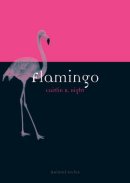
|
|
The Greater FlamingoAlan Johnson / Frank C. Cezilly
Poyser
2008
"With their curious feeding behaviour, peculiar elongated body, gregarious social lives and exotic pink plumage, flamingos are among the most familiar and popular of all the world's birds. They have inspired artists, poets and amateur naturalists for centuries, but until 50 years ago very little was known about their biology. A growing number of scientists have directed their attention to these magnificent birds over recent years; this book summarises current understanding of flamingo biology, with detailed discussion of population dynamics, ecology, movements, feeding, breeding biology and conservation, with emphasis placed on the authors' work on the famous population of Greater Flamingos in the Camargue region of southern France. There is also a detailed guide to breeding areas, and an outline of future challenges for research."
|
Buy from amazon.co.uk 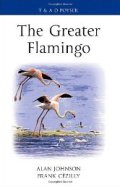
|
|
International Single Species Action Plan for the Conservation of the
Lesser Flamingo Phoeniconaias minorCompiled by Brooks Childress, Szabolcs Nagy and Baz Hughes
Technical Series No. 34
AEWA
(CMS Technical Series No. 18)
2008
Produced by IUCN-SSC/Wetlands International Flamingo Specialist Group, Wildfowl & Wetlands Trust, Wetlands International, BirdLife International Africa Partnership. Prepared with financial support from: Swedish Environmental Protection Agency, Wildfowl & Wetlands Trust, International Flamingo Foundation, Disney Animal Programs, Taiwan Council of Agriculture, Wetlands International, Pensthorpe Conservation Trust, Hillside Bird Oasis, The Friends of Banham Zoo, Flamingo Land. Printed with support from: IUCN-SSC/Wetlands International Flamingo Specialist Group.
From the executive summary: "The Lesser Flamingo is an itinerant species adapted to respond to changes in local environmental conditions by moving among wetlands, and thus depends on a network of suitable sites. Four separate populations are recognised for conservation purposes, although it is assumed that some interchanges probably occur among them. The largest population, estimated to be 1.5-2.5 million individuals, occurs on the alkaline-saline lakes of the Great Rift Valley in East Africa, where aggregations of several hundred thousand birds regularly provide one of the world 's most impressive wildlife spectacles. Smaller populations occur in the Rann of Kachchh in north-western India, estimated to be approximately 390,000 birds, in southern Africa, estimated to be 55,000 - 65,000 birds and in West Africa, estimated to be 15,000 - 25,000 birds. Declines have been suggested for much of Africa, but are difficult to clarify due to widescale movement within the continent. The Lesser Flamingo occurs regularly in 30 countries from West Africa, across sub-Saharan Africa and along the SW Asian coast to South Asia, and occurs as a vagrant in 26 additional countries. However, its global population is concentrated in 12 primary range states. Because of its specialized diet of microscopic alkaline cyanobacteria ('blue-green algae'), the Lesser Flamingo is totally dependent on a habitat of shallow saline/alkaline lakes, pans, wetlands and coastal areas, and >95% of its non-breeding population is concentrated at just 73 sites in the 12 primary range states."
|
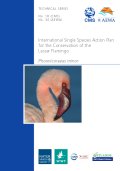 |
|
Pink FlamingosCarlo Mari & Nigel Collar
Abbeville Press
2000
"On the alkaline lakes of Kenya and Tanzania live 3 million lesser flamingos and 50,000 greater flamingos. As shown in this breathtaking book, the sight of a half-million of these beautiful, strangely aristocratic birds clustering together like a bed of gigantic chrysanthemums is awesome. The author expalins that the volcanic Great Rift Valley where flamingos are found is one of the harshest places on earthits boiling, corrovsive, and foul-smelling lakes are certain death to any animal foolish enough to drink from them - yet it is home to East Africa's pink birds. In their remote setting, flamingos inhabit a world of their own that has long puzzled naturalists who have tried to unravel the mysteries surrounding these birds, which will suddenly appear in countless thousands, delight us for a while, and disappear again just as swiftly. Carlo Mari's exquisite photographs have captured the fleeting grace and fascination of flamingos, and Nigel Collar's knowledgeable text offers insight into their curiously enchanting world. They combine to make Pink Flamingos a superb gift for bird and nature lovers and a volume that belongs in every naturalist's library."
|
Buy from amazon.co.uk 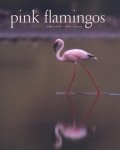
|
|
Flamingo: A Photographer's OdysseyHara
Harry N. Abrams
1991
|
Buy from amazon.co.uk 
|
|
FlamingosMalcolm & Carol Ogilvie
Sutton Publishing
1986
|
Buy from amazon.co.uk 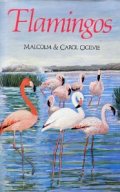
|
|
FlamingosEditors: Janet Kear and Nicole Dupaix-Hall
Poyser
1975
"This book compiles papers from a symposium on Flamingos. Half the book is concerned with flamingos in the wild covering field studies and conservation issues. The other half of the book covers flamingos in captivity and is primarily concerned with the need to improve conditions."
|
Buy from amazon.co.uk 
|
|
Nakuru: The Lake Of A Million FlamingosCharles A. Vaucher
World Wildlife Fund
1973
|
Buy from amazon.co.uk 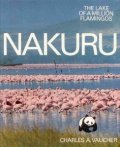
|
|
The Mystery Of The FlamingosLeslie Brown
East African Publishing House
Expanded edition
1973
|
Buy from amazon.co.uk 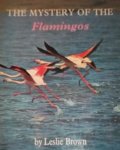
|
|
The Mystery Of The FlamingosLeslie Brown
Country Life
1959
|
Buy from amazon.co.uk 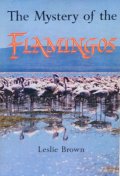
|
|
The Flamingos Of The CarmargueEtienne Gallet
Basil Blackwell
1959
Published in Europe in 1949.
|
Buy from amazon.co.uk 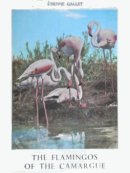
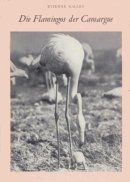
|
|
The Filter-feeding and Food of Flamingoes (Phoenicopteri)Penelope Jenkin
Philosophical Transactions of the Royal Society of London. Series B. Biological Sciences No. 674, Volume 240
Royal Society of London
1957
|
Buy from amazon.co.uk 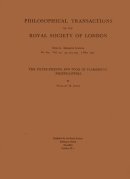
|
|
Flamingo CityG.K. Yeates
Country Life
1950
|
Buy from amazon.co.uk 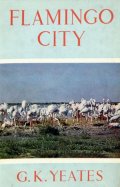
|
|
Catalogue Of The Chenomorphae, Crypturi and Ratitae In The Collection Of The British MuseumCatalogue Of The Birds In The British Museum, Volume XXVII
T. Salvadori
19 colour plates: J. Smit, J.G. Keulemans
Printed By Order Of The Trustees
Sold by: Longman & Co.; B. Quaritch; Kegan Paul, Trench, Trubner & Co.; and at the British Museum (Natural History)
1895
Preface: "The numbers of the species of Birds treated of in this Volume, and of the specimens at present in the Collection, are as follows: Chenomorphae, 205; Crypturi, 65; Ratitae. 26. In none of the preceding volumes has the number of desiderata been so small as in the present; only eight species of the Anseres, seven of the Tinamous, and four of the Ratitae being entirely unrepresented by specimens in the Museum. Beside the 67 types of recognized species, the Collection contains 25 other typical specimens which are now regarded as referable to species previously named and described. The unrivalled collection of Tinamous formed by Messrs. Godman and Salvin, and supplemented by the loan of numerous specimens from Continental Museums, has enabled the author to discriminate considerably more species than his predecessors were inclined to admit. The Hon. Walter Rothschild, whose collection of Apteryx far surpasses that in the British Museum, has given most valuable assistance in the preparation of this Catalogue by lending these as well as other specimens to the author. The present volume concludes the series of the 'Catalogue of Birds.' Thanks to the energy with which Count Salvadori has applied himself to the work, its publication precedes that of Volumes 24, 25, and 26. However, it will be followed immediately by Volume 25, which contains the Gulls and Petrels, while it is a matter of regret that no such prospect can be held out as regards the other two volumes. In a final volume it is intended to give a supplementary list of the species described since the publication of the several volumes, and an Index to the whole work."
|

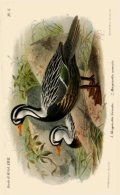
 |
|